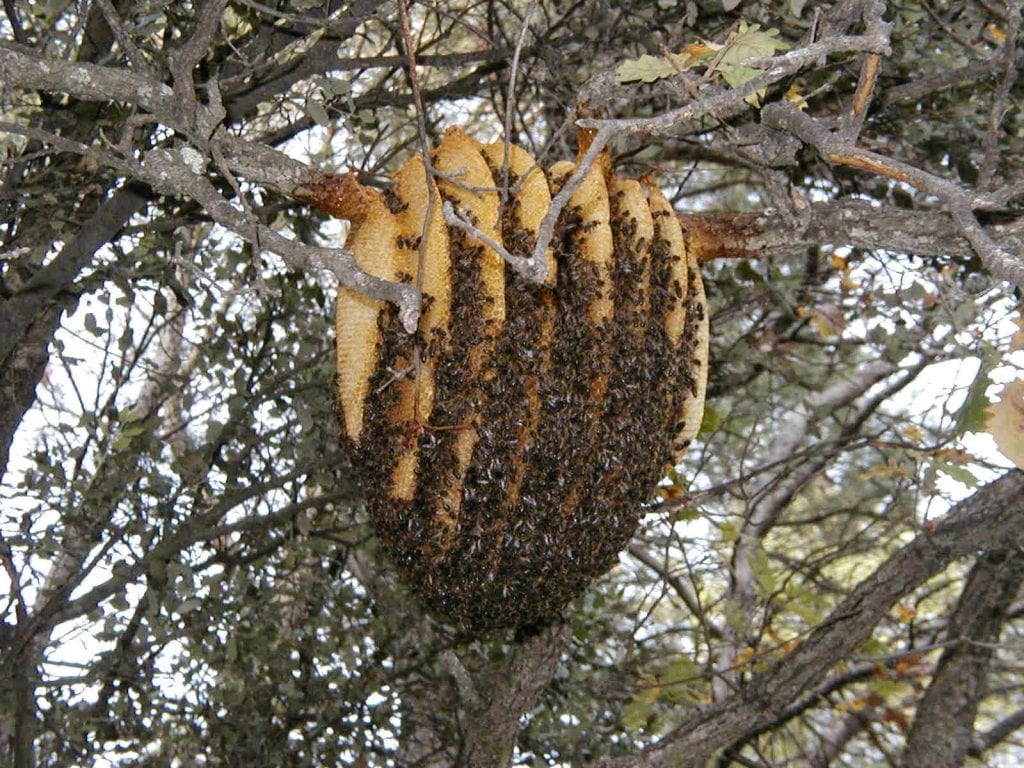 Technology
Technology  Technology
Technology  Animals
Animals 10 Popular Misconceptions about Dogs
 History
History 10 Unbelievably Badass Women from History
 Music
Music 10 Rock Musicians with Impressive College Degrees
 Misconceptions
Misconceptions 10 Totally Deceptive Marketing Tactics Exposed
 Movies and TV
Movies and TV 10 Amazing Facts About 10 of the Most Popular Television Shows
 History
History Top 10 Strange Ways Victorians Excercised
 Gaming
Gaming 10 Horror Games Where You Play as the Killer
 Our World
Our World Future Now: 10 Really Cool Things That Are about to Happen
 Miscellaneous
Miscellaneous Top 10 Still Existing Companies That Supported the Nazis
 Technology
Technology 10 Surprising Stories Made Possible by Cutting-Edge Technology
 Animals
Animals 10 Popular Misconceptions about Dogs
 History
History 10 Unbelievably Badass Women from History
Who's Behind Listverse?

Jamie Frater
Head Editor
Jamie founded Listverse due to an insatiable desire to share fascinating, obscure, and bizarre facts. He has been a guest speaker on numerous national radio and television stations and is a five time published author.
More About Us Music
Music 10 Rock Musicians with Impressive College Degrees
 Misconceptions
Misconceptions 10 Totally Deceptive Marketing Tactics Exposed
 Movies and TV
Movies and TV 10 Amazing Facts About 10 of the Most Popular Television Shows
 History
History Top 10 Strange Ways Victorians Excercised
 Gaming
Gaming 10 Horror Games Where You Play as the Killer
 Our World
Our World Future Now: 10 Really Cool Things That Are about to Happen
 Miscellaneous
Miscellaneous Top 10 Still Existing Companies That Supported the Nazis
10 Biological And Chemical Weapons From The Ancient World
CBR (Chemical, Biological and Radiological) Warfare seems like a modern invention, however it has its roots back to Ancient times. It was originally described in the Greek Myths, as Hercules dipped arrows in venom and plagues were unleashed upon armies. Perhaps it was those tales that inspired some of these heinous creations.
By today’s standards this may be the most inhumane form of warfare, however battle commanders and generals have always sought many ways to take advantage of the opposing forces. This often involved utilizing any means necessary. Gruesome, painful, and cruel, this list describes poison plants, venom, primitive incendiary devices, and more grizzly tactics used in ancient warfare.
10 Alleged Secret Weapons Of The US Military
10 Poison Arrows

One of the first places the ancients looked to for poisons was in botanical sources. Ancient Greeks and Romans knew of at least 2 dozen dangerous plants, these were often used for medicinal purposes and through trial and errors proper dosages were discovered. Many of them were beneficial in small amounts but became toxic in larger doses. One of the most popular plants was known as Hellebore, an all-purpose medicinal plant commonly prescribed by early doctors. These plants were not easy to gather and those who collected them were known to occasionally fall ill and die. In heavy doses it caused muscle cramps, convulsions, delirium, and heart attacks, this made Hellebore an excellent choice for arrow poisons.[1]
9 Contaminating Water

Hellebore was not just useful for poisoning arrows, in this account the Greeks used it in a more sinister way. During the First Sacred War, around 590 BC, besiegers of the strongly fortified city of Kirrha cut the water pipes leading into the city. After which they gathered a large quantity of Hellebore and placed it in in the water source. Once the townsfolk were suffering from intense thirst, they reconnected the water supply, now poisoned. The Kirrhans became violently sick to their stomachs and were so weakened by diarrhea that they took the city without opposition. Depending on the account this military strategy has been attributed to at least 4 different Generals, but whoever contrived this plan was a twisted, yet effective leader.[2]
8 Catapulting Corpses

Perhaps the most common story of Ancient Bio Warfare stems from this account. In 1346 the Mongols had an outbreak of Bubonic Plague amongst their troops. It did not take long for them to learn that proximity to a victim or corpse would spread the disease, so naturally they realized they could weaponize it. A few catapult shots later and the city of Kaffa was littered with plague-ridden corpses of the Mongols own troops. This would be the introduction of the dreaded disease to Europe. Spreading disease was not the only desired effect of this tactic. The psychological effects that it had on the opposing troops was demoralizing and terrifying. The idea for this type of warfare has always been to incite panic and fear, and this tactic no doubt accomplished that well.[3]
7 Envenomated swords

While poisonous plants and herbs were effective for certain regions, during Alexander the Great’s conquest of the Middle East an even deadlier method was discovered. In 326 BC Alexander and his army arrived at the fortified city of Harmatelia, which was most likely located in modern day Pakistan. Reportedly the Harmatelians were oddly confident in their victory, the Greeks soon learned the reason why. Their swords and arrowhead were coated with a drug of mortal effect, it was said that even a small scratch would kill a man. This poison was derived from snakes, most likely a type of viper. These snakes were killed and left to rot in the sun, as the heat decomposed the flesh the venom mixed with the liquefying tissue. Descriptions of the poison’s effects are vivid. A wounded man immediately went numb, suffering stabbing pains and convulsions, next their skin became cold and they vomited bile. It is stated that black froth spewed from the wound and gangrene spread rapidly, bringing a horrible death.[4]
6 Lime Dust

Several forms of toxic smoke and gasses were implemented by ancient people. Burning noxious items to create clouds of smoke to deter opponents was common, it was however hard to control, as a shift in the wind could cause this to fail miserably. The Chinese developed an interesting way to manage this. In AD 178 China used an early form of tear gas to quell an armed peasant revolt. Powdered limestone dust was equipped on horse drawn chariots with bellows attached to blow the dust forward with the wind. When the dust interacts with moist membranes such as the eyes and nose, the effects are corrosive, blinding and suffocating those inhaling it. This tactic created an effective fog, this combined with stampeding horses, loud gongs and drums the rioters were thrown into chaos and overwhelmed. Methods such as this are still used to this day, with modern tear gas or pepper spray, and while the wind can still be a problem modern gas masks have minimized this threat.[5]
Top 10 Nonlethal Weapons That Are Actually Lethal
5 Beehive bombs

Among the first projectile weapons used in warfare were hornet nests and beehives. Swarms of bees had been known to invade cities, forcing evacuations, this led to a natural realization that the stinging pest could be used to repel attackers. Of course, there was danger in this for both parties. Tales suggest hornets’ nests were plugged with mud and carefully transported, and bees were persuaded to colonize special containers. Using smoke to tranquilize bees was a tactic known since antiquity, there is also evidence of special powders to calm the insects before release. In World War 1 tripwires were set up along the enemy’s route that would release hives. During a siege, nests were thrown into tunnels dug by the besiegers to deter their advance. Deploying stinging insects can be dated back to biblical times and even as recently as the Vietnam War where Vietcong soldiers set up booby-traps with Asian honeybees against American soldiers.[6]
4 Flaming arrows

As early as the 9th century accounts describing the use of flaming arrows exist. The first of these incendiary missiles were simply arrows wrapped in plant material such as straw or hemp. In early times these were highly effective against wooden wall and structures, however as time progressed, they became less efficient. They had no effect on stone walls and could be easily snuffed out with water. The search began for chemical additives that could cause the fires to burn fiercer and become more resistant to dousing with water. The earliest additive was pitch, flammable resin tapped from pine trees. This sticky sap achieved the desired effects. Arrows dipped in the sap and ignited burned hotter and longer than their counterparts. This led to other uses, soon pitch would be poured onto invading attackers and lit bags of pitch were hurled down from the tops of walls. Also, useful to combat siege engines these tactics were used for hundreds of years.[7]
3 Toxic honey

In perhaps the strangest tale not one but 2 invading armies were defeated, hundreds of years apart not by a weapon, but by a delicious treat. In 401 BC in the land of Colchis (near modern Turkey) Xenophon, a hoplite commander, stopped his men at a seemingly perfect place to camp. The Colchian village was well stocked with food and even offered the special treat of wild honey, which the hungry soldiers soon found and raided. Soon after the troops succumbed to a strange affliction, delirious and behaving like intoxicated madmen, they soon were collapsing by the thousands. The men were completely incapacitated and some even died. This mad honey was produced by bees that collected nectar from poisonous rhododendron blossoms. Even today a small spoonful is added to milk or alcoholic beverages for an additional kick, however one not familiar with the effects can easily overdose. 4 centuries later this would happen again to a Roman army in the same region. It is often speculated the other ways in which this honey may have been used in warfare.[8]
2 Scorpion Bombs

Wasps and Bees were not the only insects weaponized in combat, reports also describe the use of scorpions, assassin bugs, and various beetles. These creatures were abundant in the desert and were utilized against the Romans during their attempts at controlling Mesopotamia. In the fortified city of Hatra, the citizens prepared a strong defense against the Roman invaders, clay pot “bombs” filled with scorpions. These earthenware pots were then sealed and dropped onto the invading forces. The Scorpions reportedly lurked under every stone and clod of dirt and the King would reward those who could kill the most to ensure safe travels. Bites from these insects was said to be incredibly painful inflicting a lingering death that would last three days, this was accompanied by great agitation, sweating, convulsions, and swollen genitals. Certainly, something that once witnessed would incite paranoia.[9]
1 Greek Fire

One of the most devastating ancient weapons ever described was the notorious Greek Fire. This was reportedly based on the development of an effective distillation and siphoning pump technologies. This allowed a flammable mixture to be pressurized and pumped from boats, creating a launch-able stream of liquid fire. The main ingredient of the mixture was said to be Naphtha, a chemical that had been used in firebombs and dumped off castle walls for years. Pumping pressurized and distilled Naphtha through tubes aimed at ships was certainly a brilliant feat of engineering for the time, and the exact delivery method was a heavily guarded secret and is now lost to time. Resembling modern Napalm, this would have been a terrifying weapon to deal with, the only defenses described included draping the ship in wet hides, only sailing in stormy weather, or attempting dangerous evasive maneuvers.[10]
10 Prototype Weapons Too Insane To Use
About The Author: Brad D Fuller is a retired US Navy Sailor living in small town Ohio. He is also a Board Game Designer and Collector.








